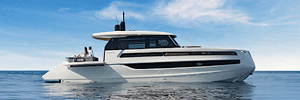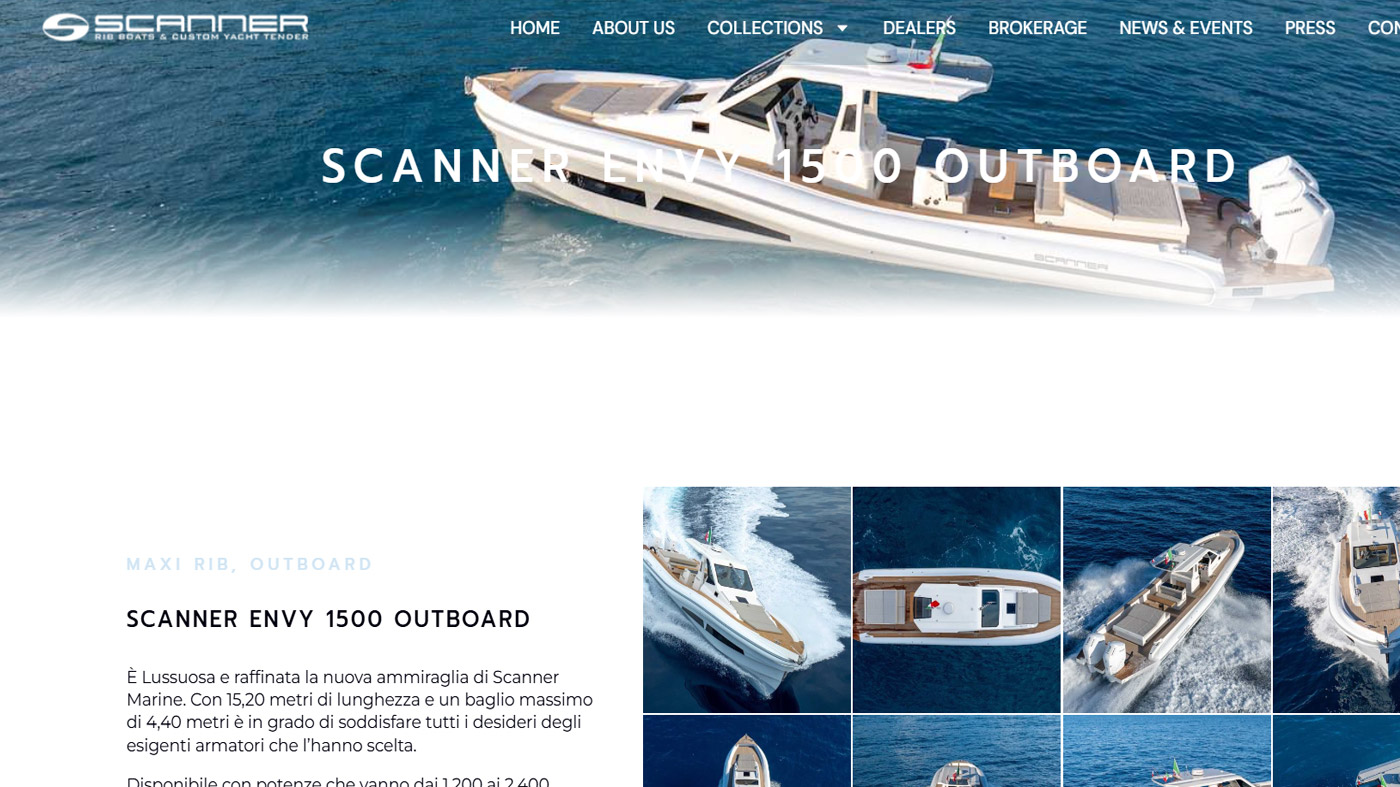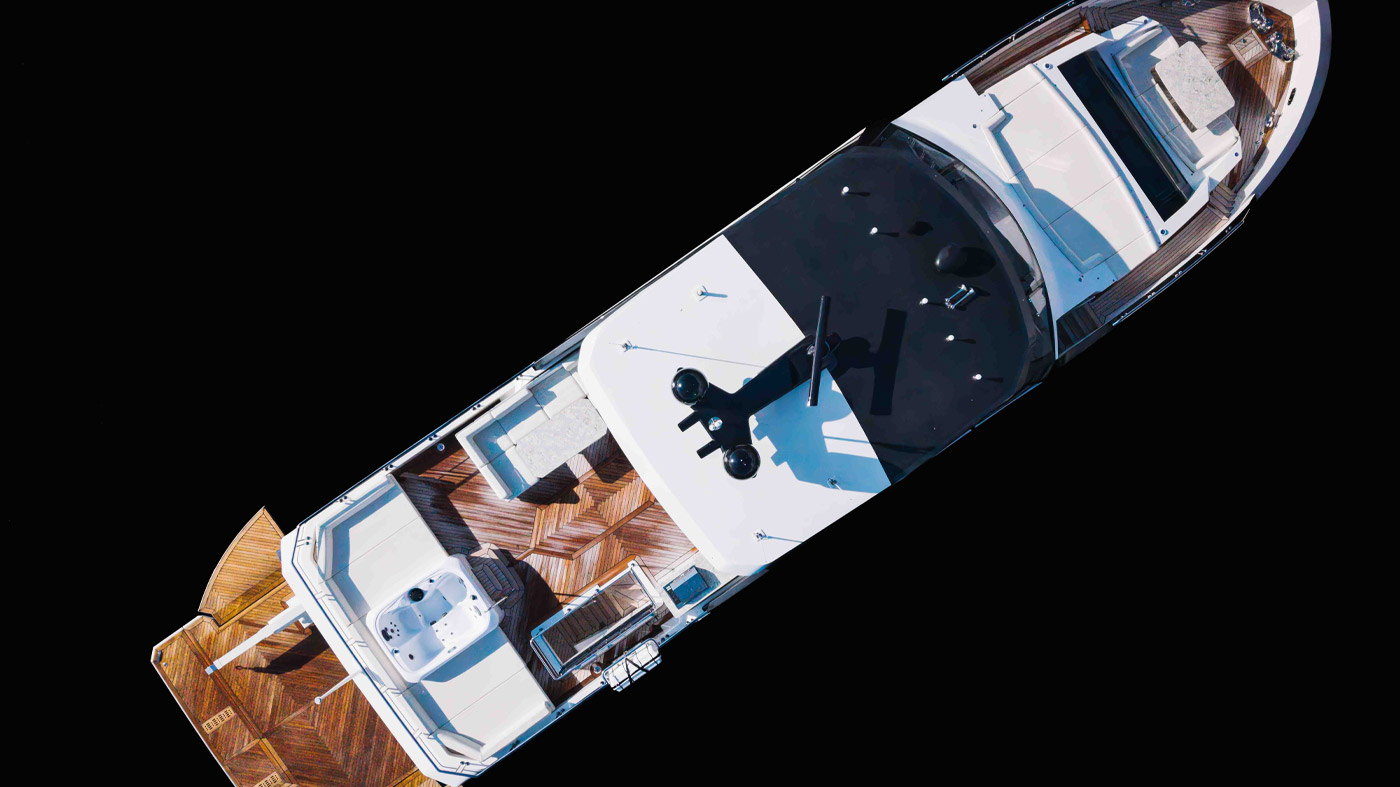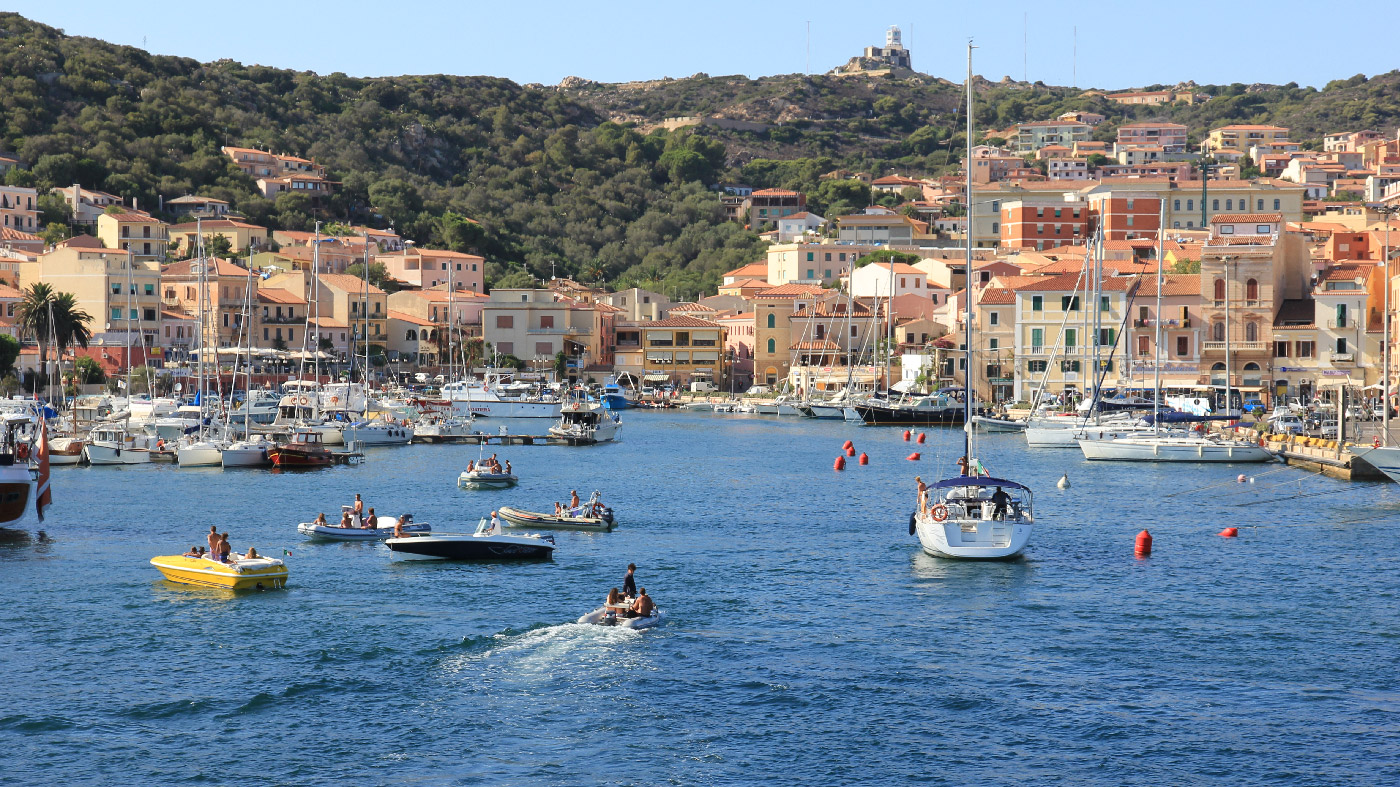Deep sea trolling: preys, areas and periods
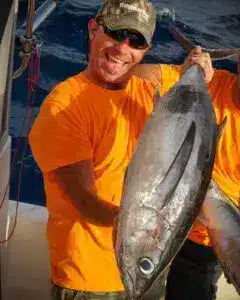
Deep sea trolling is an offshore fishing technique practiced all over the world, which targets large pelagic predators and which, even in the Mediterranean, can give great excitement to anglers who enthusiastically embrace it.
In many places on the planet, especially where this technique is practiced in ocean waters, this discipline is often referenced when speaking of Big Game Fishing.
It is the type of fishing experienced, and narrated in his novels, by ‘Papa’ Hemingway, who so thrilled and continues to thrill sea lovers like us, recounting his adventures in search of his big marlin, navigating the waters of the Gulf Stream.
It is a type of fast trolling (in the Mediterranean it is practiced on average between 6 and 8 knots), mostly done with artificial baits, or combinations of artificial and natural baits (sometimes only with natural baits rigged in a particular way), which is often practised on deep waters and most often at a considerable distance from the coast.
Prey, depths and distances from the coast
As in all fishing techniques, even in the deep sea trolling the bait is dropped where the fish we are looking for are thought to be, so what makes us choose the bathymetric, and therefore the relative distance from the coast for our fishing action, are precisely the prey typical of this type of trolling.
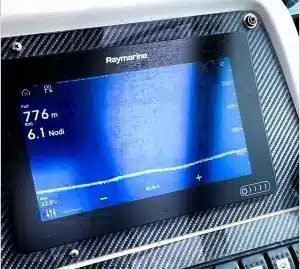
The bathymetrics for deep sea fishing in the Mediterranean range from 100 to 2000 metres, and the average speed is between 6 and 8 knots.
With the warming of our sea, the landscape of target prey, like the best time to fish them, is changing.
Deep sea trolling is very much linked to the warming of the surface water, the photoperiod and, in general, to the availability of food and the food chain that is created in the higher waters at certain times of the year.
Generally speaking, the best times are late spring, summer and, in recent years, great results are also achieved in the first half of autumn.
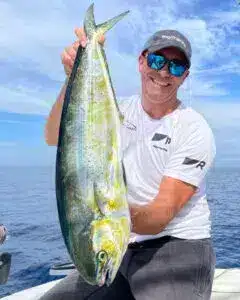
The iconic prey of deep sea trolling is surely the albacore, a fish that also lives at great depths but which, precisely, can be caught by deep sea trolling at certain times of the year, on the surface.
Other sought-after fish are the rostrata, the most common prey being the imperial garfish (Tetrapturus belone). This predator is increasingly frequent in many areas but is, however, to be caught with extreme restraint. This is an endemic pelagic of the Mediterranean, a close relative of the marlin. Congeners, very similar to our imperial garfish but of Atlantic origin, can also occasionally occur in our waters, as there are also, albeit rare, cases of white marlin being caught.
Another sought-after rostrum is the swordfish, which, although a frequenter of the deep during the day, a fish that swims towards the shallowest parts of the water column especially at night, on certain occasions and periods is a predator that attacks deep sea trolling lures during daylight hours (it should be pointed out that there are specific approaches to swordfish trolling that are practised at night).
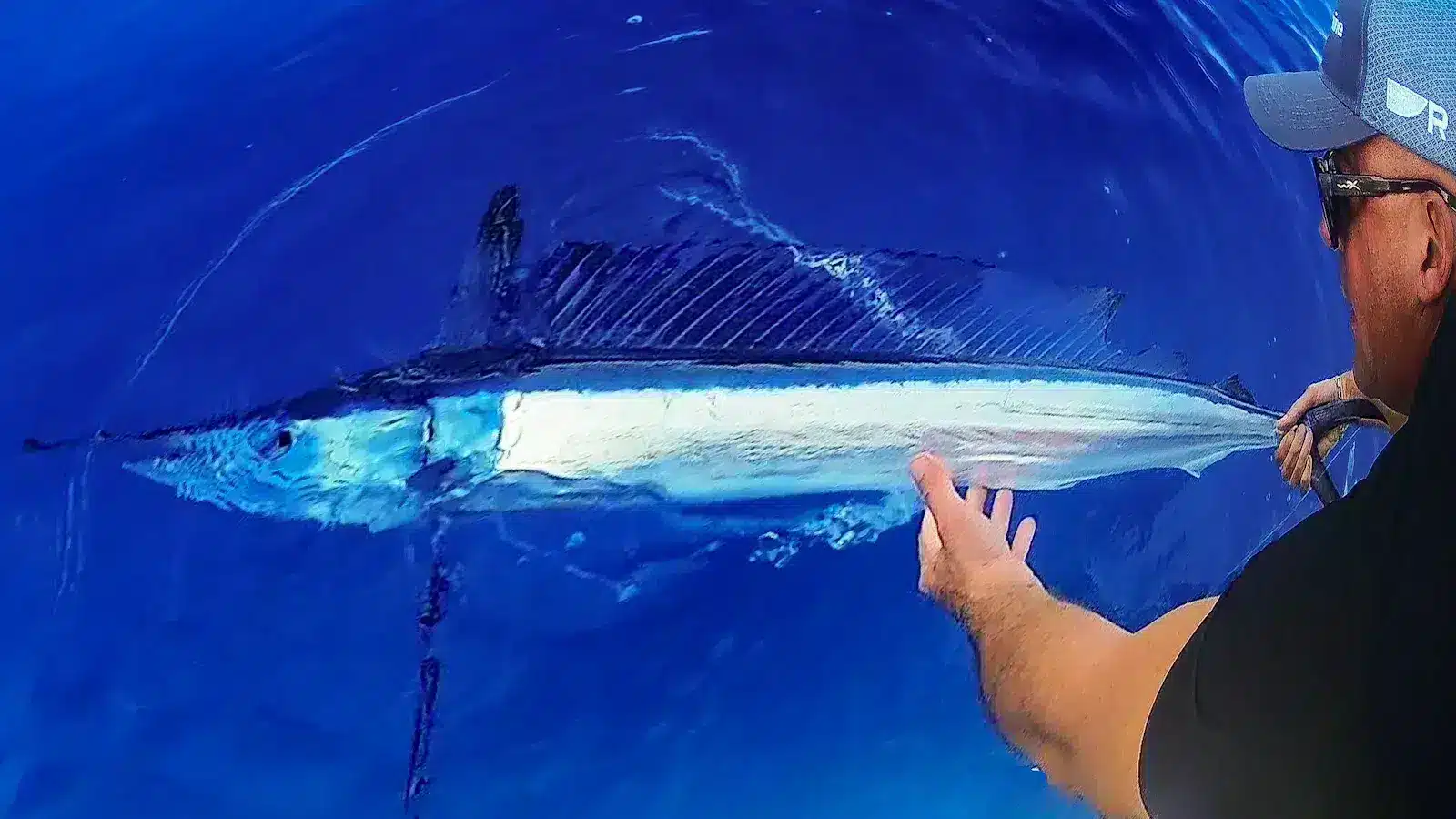
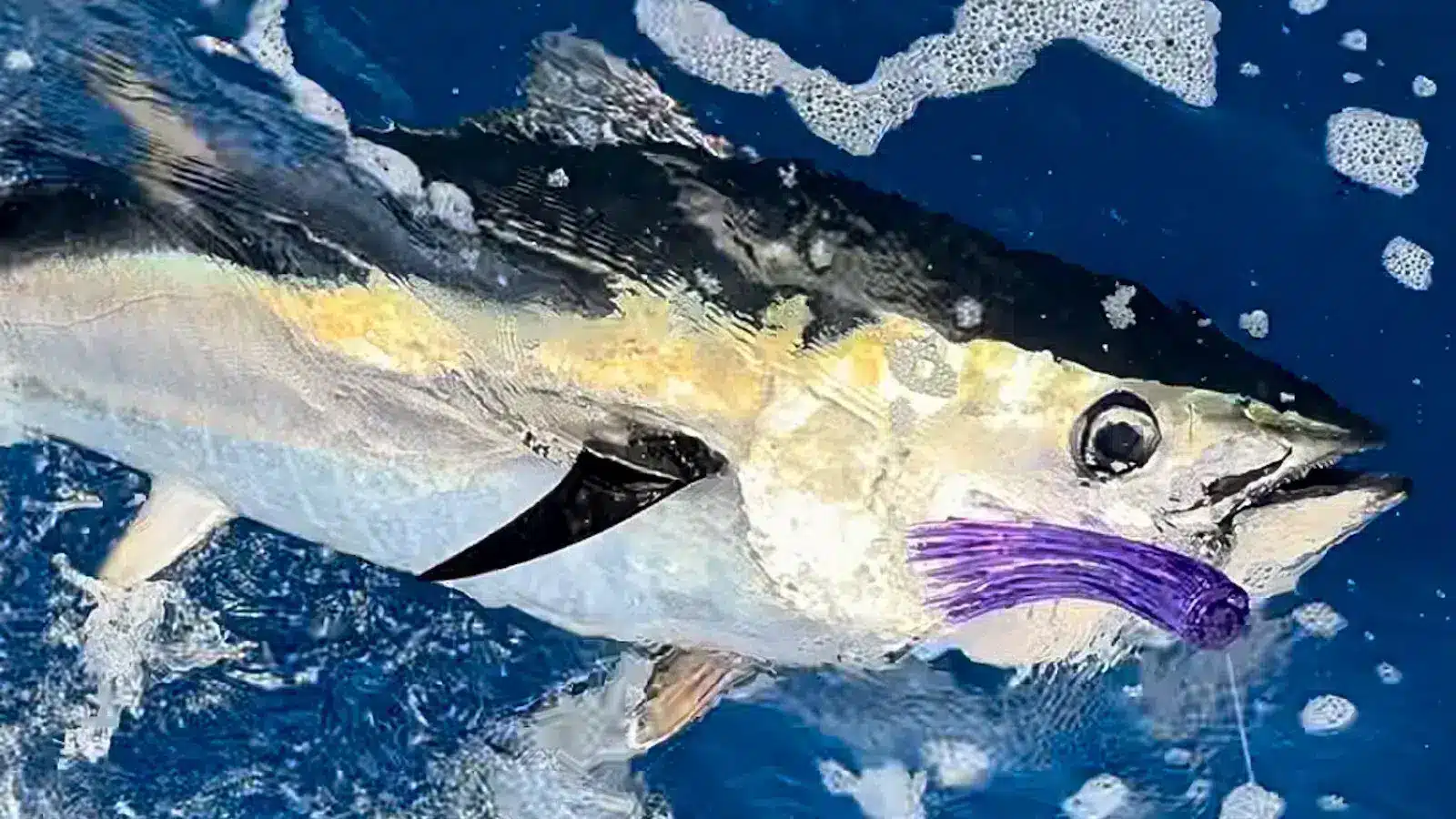
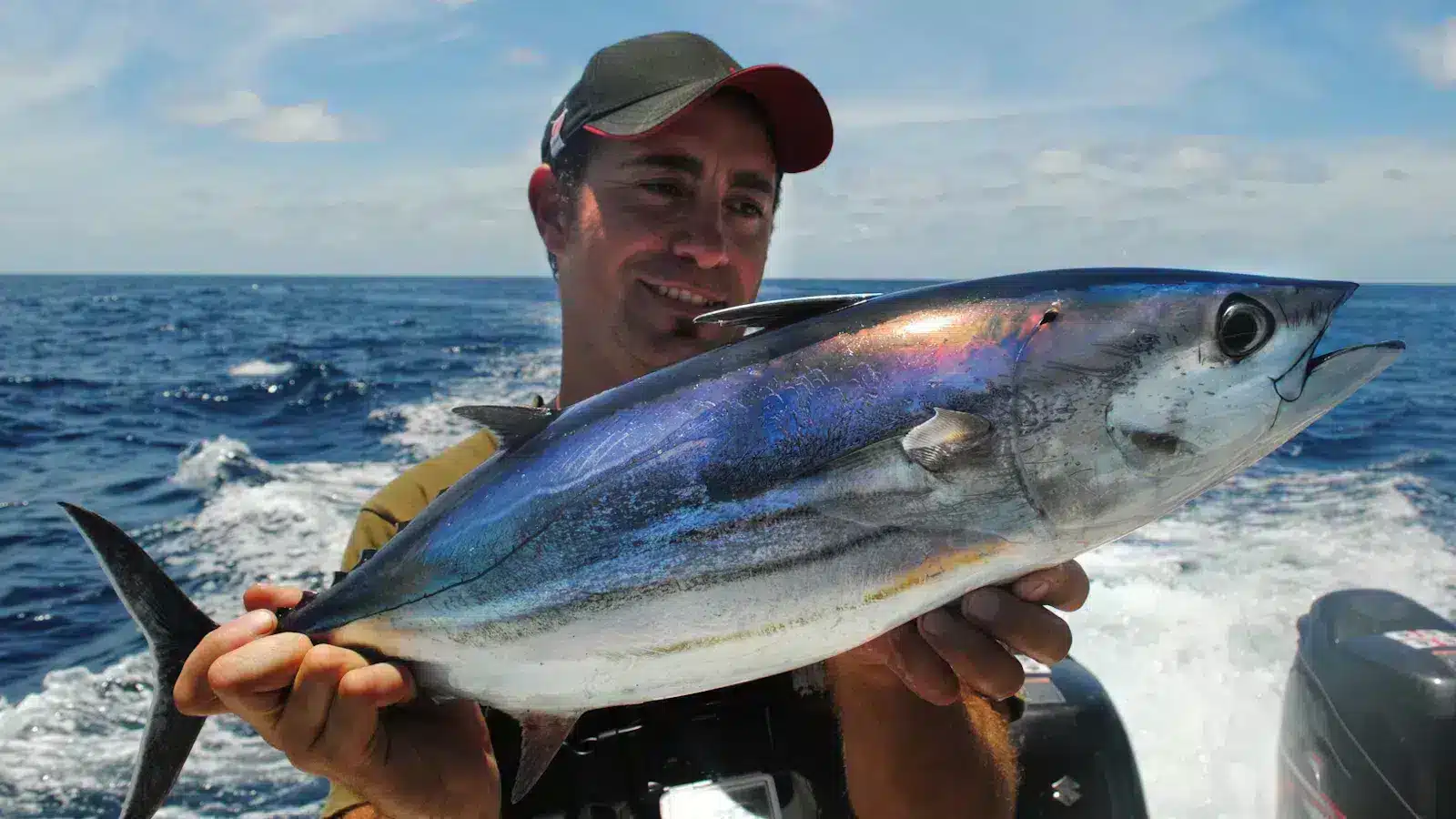
Another fish much loved by the deep sea troller is bluefin tuna: a species that frequently attacks trolling lures, especially if they are young specimens (school tuna frequenting the deep sea), which in most of the Tyrrhenian Sea have an average size of between 15 and 40 kg (in the Adriatic, the average size of tuna in deep-sea trolling can be higher).
Another target prey is the dolphinfish: catches of large specimens of this species have become increasingly frequent in recent years.
Probably also as a result of the warming of the sea, the skipjack tuna, a fish that was already being caught in some areas in the past, is much more frequent in our waters, only to disappear and return with some frequency in recent years. It is a cosmopolitan fish, found in many temperate and warm seas that recently, even in Italy, can often provide entertaining fights, especially if caught with light equipment.
Bathymetrics
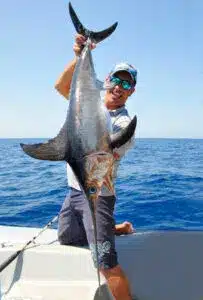
The bathymetries of the deep sea trolling are closely linked to the habits of the target fish you are looking for (not all target fish in the deep sea frequent the same areas at the same time), however, in general, in many areas of Italy, the most profitable depths are between 500 and 2000 m, especially if we are talking about albacore, skipjack or bluefin tuna. But the situation is different if we are looking for imperial garfish, in fact in many areas these fish also frequent bathymetries between 70 and 500 m, especially in summer and early autumn.
This is especially the case if these bathymetries are at the edge of submerged canyons, or near fast ascents from 500 m up to 100. In these particular spots, at certain times we can also find the other target fish of the deep sea.
So, before rigidly deciding on fishing areas based on bathymetrics, it is important to understand what the best areas might be, also making reference to the area you are fishing in, the habits of the fish in that area of the sea, and also bearing in mind the time of year.
Deep sea trolling: the best areas
Generally speaking, in order to broadly understand the best areas in which to fish, it is important to study the nautical charts, i.e. the cartography of the area you want to explore, paying close attention to the bathymetric dips characterized by the steepest gradients.

In fact, it is the sudden jumps in the seabed, i.e. steep drops, shoals rising for many hundreds of metres, submerged canyons, that can make an area particularly profitable. This happens because the strong currents coming in from the open sea, once they collide with a sudden upwelling of the seabed, only push the deeper, nutrient-rich waters towards the surface (a phenomenon called upwelling). Thus, these phytoplankton- and zooplankton-rich waters, having reached the higher reaches of the water column, trigger an important food chain. Sardines, anchovies, mackerel, flying fish, and many other species (also juvenile stages of larger predators), being plantophagous, i.e. fish that feed mainly on zooplankton, catalyze in these areas, thus attracting here pelagic predators that feed on these small fish.
The food chain that is triggered draws all the fish that are the targets of your fishing trip to these areas, so it is in these stretches of sea that you will be practising deep sea trolling.
This discipline, in order to be practiced at its best, must follow some important rules, linked to the type of bait, the number of rods spun in the water and their set-up, as well as the trolling location itself. Very important aspects that we will discuss in future articles, again here on Yachtingnews Fishing.



